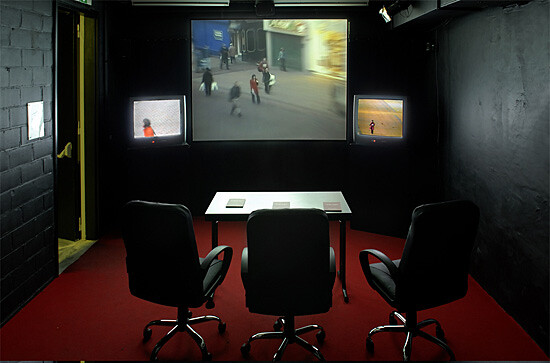A Biennial plans to take the form of an art school on Cyprus and ends up as a series of seminars in Berlin. An artistic director of Documenta tosses up the word Bildung and one hundred magazines try to catch it. Uninteresting art fairs actually organize interesting public debates. According to Tom Holert, “Within the art world today, the discursive formats of the extended library-cum-seminar-cum-workshop-cum-symposium-cum-exhibition have become preeminent modes of address and forms of knowledge production.”1 While “education” has become, as Mai Abu ElDahab noted on the occasion of the announcement of the plans for the 2006 Manifesta Biennial 6 on Cyprus, “the buzz word in the art world,” and it is possible, as Irit Rogoff did more recently, to speak of an “educational turn in curating,” it seems to be much less fashionable to go into too much detail about institutions of art education as such.2 In observations such as these the stress is placed on expanding the notion of the academy, rather than on deepening the concept of the academy stricto sensu. Their aim appears to be to include as many art institutions as possible within the field of expanded academia, rather than to define the specific role of the art academy as such. Very often, the academic turn seems to be a way to turn away from the academy: indeed, if the art field becomes an academic one, then what an academy has to offer can also be found elsewhere, at other institutions and self-organized initiatives constituting the field of expanded academia. The suggestion seems clear: we don’t need the academy.
Although there certainly are some notable exceptions, many participants in the debates on education and the arts, even if they aren’t necessarily hostile towards the art academy as an institution, clearly shy away from discussing the particularities of higher art education.3 One of these particularities, insofar as Europe is concerned, is the way in which art academies are involved in the so-called Bologna Process, which is supposed to lead to the establishment of a European Higher Education Area in 2010, which should, in accordance with the Lisbon Strategy, contribute to the establishment of the European Union as the world’s biggest knowledge economy starting next year. In these debates, “Bologna” is at most allowed to play the role of annoying background music to their high-spirited essays: they almost never confront the detailed characteristics and implications of the Bologna Process as such. The motto that governs their statements seems to be: “Bologna is bad, so let’s not talk about it any further.” Thus, while rightly refusing the (art) academy the monopoly on (art) education, one conveniently allows oneself not to think about the (art) academy altogether. This doesn’t mean that there aren’t any relevant discussions going on within (art) academies, on the contrary. But many of the high-profile voices in the contemporary debates on education and the arts aren’t going to tell you what these internal discussions are about, even if occasionally they may be very well positioned to do so. Therefore I set myself the task of talking about a few things that some of my esteemed colleagues seem rather reluctant to talk about.
At art academies in many of the forty-six European countries participating today in the Bologna Process, the doctorate in the arts has become the subject of heated discussions.4 First of all, there is the existential question many people ask: Why should there be a doctorate in the arts, rather than nothing? Weren’t we happy without it? It is no secret that many people see neither the socio-economic necessity nor the artistic relevance of a doctorate in the arts. There is fierce opposition to it from people within higher arts education, universities, and the arts field—at least in so far as it still makes sense to draw a clear-cut distinction between higher arts education, universities, and the arts. Indeed, among many other things, the Bologna Process could be described as a deconstruction of the old demarcations between precisely these three sectors. In any event, from various positions within these sectors in the process of deconstruction that is called Bologna, voices are heard opposing the doctorate in the arts. Against these voices—whether coming from the grumpy old folks who prefer to continue to live in a world that no longer exists and cling to the character of institutions as they once knew them, or from the jumpy young ones who already live in a world yet to come and fly at the character of institutions which they believe they know are no longer useful—I would like to fiercely defend the doctorate in the arts.
A defense of the doctorate in the arts is an institutional condition of possibility for the defense of a doctorate in the arts. A doctorate in the arts will always be defended according to a certain concept of the doctorate in the arts, laid out in rules that have previously been defended within the responsible university or faculty board or council. As a matter of fact, the latter kind of defense might turn out to be as exhausting as the defense of a doctorate as such. It will continue to demand a good deal of struggle in order to establish that the doctorate in the arts meets artistic—rather than merely academic—requirements and expectations. In this respect, strange as it may seem, many of today’s strongest opponents of the doctorate in the arts are more trustworthy allies in the struggle for an artistically meaningful doctorate in the arts than some of those who count themselves among its most outspoken and enthusiastic proponents. The way in which some people today defend the concept of a doctorate in the arts is utterly unconvincing and probably part of the reason for the strong opposition to it.
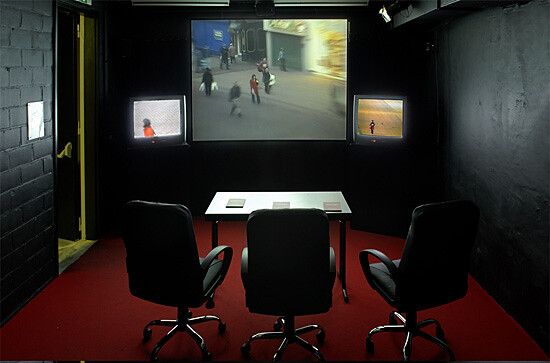

Those opposing the doctorate in the arts are indeed so outspoken, one may wonder how the idea of a doctorate in the arts came up in the first place. A reminder of a few crucial steps in the Bologna Process may be helpful in understanding the idea’s emergence in continental Europe. The Bologna Process was launched with the Bologna Declaration on June 19, 1999.5 Now, all countries participating in the Bologna Process are supposed to do so of their own accord. Unlike an Intergovernmental Treaty, the Bologna Declaration is not a legally binding document. European sanctions are not what drives the whole process, but rather what some have called “international peer pressure.” With the 1999 Bologna Declaration, the then twenty-nine participating countries committed themselves, but were not formally obliged to the:
• Adoption of a system essentially based on two main cycles, undergraduate and graduate. Access to the second cycle shall require successful completion of first cycle studies, lasting a minimum of three years. The degree awarded after the first cycle shall also be relevant to the European labour market as an appropriate level of qualification. The second cycle should lead to the master and/or doctorate degree as in many European countries;
• Establishment of a system of credits - such as in the ECTS system - as a proper means of promoting the most widespread student mobility.
• Promotion of mobility by overcoming obstacles to the effective exercise of free movement …
• Promotion of European co-operation in quality assurance with a view to developing comparable criteria and methodologies;
• Promotion of the necessary European dimensions in higher education, particularly with regards to curricular development, inter-institutional co-operation, mobility schemes and integrated programmes of study, training and research.6
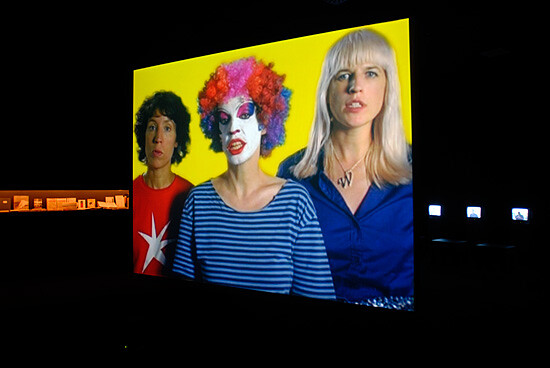

However, it appears that the Bologna Process, insofar as it created instruments of comparison between study courses across an expanded Europe, also created instruments that purport to show in an objective way that study course X in country A doesn’t have the same value as study course Y in country B. Indeed, an instrument of comparison may show the incomparability as much as the comparability of its subjects. Just because they have instruments of comparison at their disposal doesn’t necessarily mean that countries have become more eager to accept equivalences between diplomas. Whereas in the past the acceptance of equivalences between diplomas was based on general criteria such as the number of study years, criteria for comparison today tend to be so sophisticated and bureaucratic that there might always be a reason why study course X in country A is not quite the same as study course Y in country B.
This belongs to the standard anti-Bologna rhetoric of expanded academia to say that the Bologna Process leads to the homogenization of European education. In reality, however, the Bologna Process is implemented in very different ways. One could claim that the Bologna Process is basically about setting up devices that allow for comparison between national or regional educational systems only to discover how different these systems are. As a result, the Bologna Process gave rise to very elaborate discourses on the multiple differences between national or regional educational systems, and on the singularity of particular educational systems. The discourse on the supposed singularity of the German Meisterschule—regarded as highly successful as it is, and entirely incompatible with the (partly imaginary) characteristics of the Bologna Process—grew together with the Bologna Process discourse and explains the success of the German art academies in their resistance against the Bologna Process.7 So far, the Bologna Process has proved more successful at showing all the differences between educational systems in its expanded version of Europe (which includes forty-six European countries, not only the twenty-seven member states of the EU) than at homogenizing them.8
In the early years of the Bologna Process, the primary interest lay with the introduction of the bachelor and master cycles, rather than the doctoral degree.9 It was only with the meeting of the Bologna Follow-Up Group in Berlin in 2003 that the third cycle leading to the doctorate became a priority. Two years later, in Bergen in 2005, the Ministers responsible for Higher Education affirmed that: three to four years is the normal workload of the third cycle; the advancement of knowledge through original research is at the core of doctoral training; doctoral programs should promote interdisciplinary training and develop so-called transferable skills in order to meet labor-market needs; the outcomes-based-approach framework for qualifications should also be applied to doctoral-level qualifications; and so forth. In London in 2007, the Minister responsible for Higher Education in the forty-six countries now involved in the Bologna Process invited the European University Association to work on “transparent access arrangements, supervision and assessment procedures, the development of transferable skills and ways of enhancing employability.” In response to this demand, the European University Association established in 2008 a Council for Doctoral Education.10 Thus the idea of the doctorate in the arts emerged with the growing focus of the Bologna Process on the third cycle.
Although academics involved in the establishment of the rules for the doctorate in the arts did pay attention to the demand that the new doctorate should respect the specificity of an artistic education—to the extent that they accepted the idea that artists present a portfolio of their work as a doctorate—most of them fiercely defended the idea that a doctorate in the arts would be inconceivable without a written supplement. As a result, the format of the new doctorate often requires both an artistic portfolio and a “written supplement.” The insistence of academics on the obligation to produce a written supplement appears to demonstrate a lack of confidence, either in the capacity of the arts to speak in a meaningful, complex, and critical way in a medium of their choosing, or in their own capacity to make sound judgments on the meaning, complexity and critical potency of artistic output as such. What might happen now is that, because it complies with the long-standing format of the doctorate, juries will base their assessments primarily on a reading of the written supplement, as if it were the doctorate itself, at the same time being tempted to consider the artistic portfolio as merely its supplementary illustration.
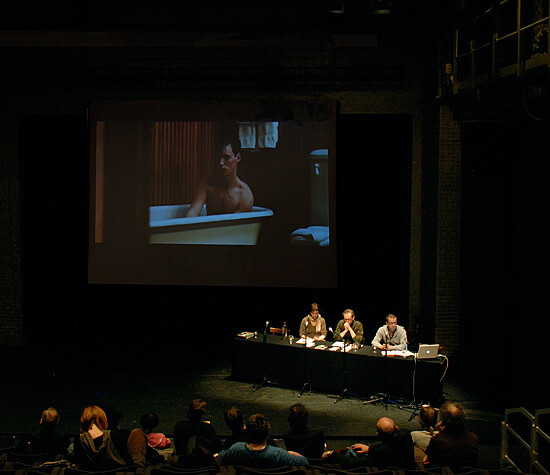

Contrary to this, the evaluation of a doctorate in the arts should focus on the capacity of the doctoral student to speak in the medium of his or her choice. And if this medium is film, or video, or painting, or sculpture, or sound, or “new,” or if the doctoral student wants to mix media, it will obviously require from a jury ways of reading, interpretation, and discussion other than those required by an academic text. To impose a medium on the artist is to fail to recognize the artist as an artist. An artist who wants to obtain a doctorate in the arts should be given the academic freedom to choose his or her own medium. Even then it would still be possible that he or she chooses text as the most appropriate medium for his or her artistic purposes. Therefore, one should be prepared for the moment when a writer will present a novel in fulfillment of the primary requirement for a doctorate. According to the currently prevailing format of the doctorate in the arts, however, the writer would be asked to supplement his novel with another text, a written supplement. Would anyone seriously want this? What should that written supplement say?
While the Bologna Process facilitated the recognition of “artistic research” as a fundamental task of art academies—a task which many of them were already performing “before Bologna”—universities and academies are now struggling both with the concept of artistic research itself and with the question of how to assess the output of artistic research. This is a very complex discussion, one with which universities can occasionally appear impatient. At the same time, universities generally don’t have accepted answers to the question of how to assess the output of scientific research either. Sometimes universities seem to be torn between, on the one hand, their own academic uncertainties, and, on the other, the leadership role that policy makers bestowed on them within the academicized process of higher arts education. When universities tell academies, for instance, that the unquestioned norm in academic evaluation is “double-blind peer review,” this contradicts the fact that, within the scientific community itself, this norm has been under attack for many years, and that a number of high-profile scientific journals, such as the British Medical Journal, have made the decision (motivated by scientific studies) to abandon blind peer review in favor of open review, in which the name of the referee is known to the author of the article under review.11 Today, it seems a scientifically proven fact that the quality of open review is as good as that of blind review.12
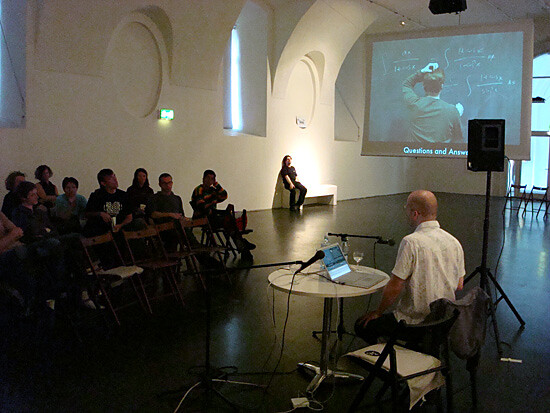

When universities tell academies that citation analysis provides an objective criterion to measure research output, they are again, deliberately or not, concealing the fact that citation analysis is considered by many in the scientific community to be a very flawed procedure for measuring research output. In fact, ever since Eugene Garfield published the first Science Citation Index, in 1964, it has been a very controversial instrument, its possible misuses being recognized from the very beginning by leading scientists, such as Nobel Prize winner Joshua Lederberg. Lederberg, while promoting it as a tool for research, fiercely rejected it as a tool for measuring research output.13 Not only are all known citation indexes far from complete, they are also horribly biased in favor of articles and against books. To that one might add that the Science Citation Index and the other citation indexes are products sold by Thomson, a media corporation which also owns many academic journals. To me, this sounds very much like a conflict of interest. Nevertheless, many research managers continue to consider citation analysis, based on the use of Thomson’s citation indexes (which enjoy an absolute commercial monopoly), as a useful tool for measuring research output. In discussions between universities and academies, it is often suggested that academies should invent “analogous” tools for measuring artistic research output. And thus it happens that some people are beginning to dream of an Art Citation Index, while others are talking about the need to classify artistic venues in the same way as academic journals are classified according to their “impact factor.” It might not now be long before somebody invents the new science of “artometrics.”
The Bologna Declaration as such does not constitute an absolute evil for education, but the institutional and political struggles to impose certain of its interpretations do present many dangers, of which most people working at art academies are very well aware. The good news is that, due to what many people working and studying at academies experience (with good reason) as harassment by the Bologna Process, the academy is also in the process of reinventing itself. The pressure in the field of expanded academia, in which many other types of institutions are readily offered as alternatives to the overregulated field of higher arts education, certainly plays a key role too in this process of reinventing the academy.14 Some academies are successfully reinventing themselves through the cooptation of people who made their career outside the academy, as writers, critics, curators, artists, and so forth. It may seem in blatant contradiction with the academicization process of European higher (arts) education that is the Bologna Process, but it isn’t. If the Ministers responsible for Higher Education would like their academies to become or stay competitive within a field of expanded academia, in which there are many attractive alternative models of education, one should endow academies with enough autonomy to position themselves strategically within this field. The big frustration of many academies all over Europe today is their lack of autonomy, which doesn’t allow them to make the decisions considered necessary by those trying to manage them. Meanwhile, the argument for autonomy is splendidly made by those academies in Europe that have been able to maintain or even augment their autonomy, such as the impressive Academy of Fine Arts in Vienna.15 At art academies of this scale, there is enough critical mass to allow them to stand confidently next to their big sister the university, rather than becoming a department within it. Even more, they’ve become universities themselves.
Today, the academy is asking not to be considered as the only legitimate place of art education, but as a credible partner within this endeavor. The time of academy-bashing is over. Indeed, the academy is back, almost. It’s absolutely fine to situate yourself outside the academy. But one shouldn’t hesitate to play a role within an academy, as many former outsiders today do quite successfully. It is my bet that the art academy is going to be the defining innovative institution within the art field in the next twenty years, much more so than museums, galleries, biennials, whatever. There might even come a time when museums of contemporary arts will be run as the exhibition facilities of nearby academies, just as the Swiss Federal Institute of Technology Zurich today runs Monte Verità as a conference facility. If museums of contemporary arts desire to belong to the field of expanded academia, as indeed they seem to, this scenario makes perfect sense. And maybe one day we will be quite accustomed to the fact that a solo exhibition in a museum of contemporary arts can’t be anything but the presentation of a…doctorate in the arts.
Tom Holert, “Art in the Knowledge-based Polis,” e-flux journal, no.3 (February 2009), →.
See Mai Abu ElDahab, “On How to Fall With Grace – Or Fall Flat on Your Face,” in Notes for an Art School, ed. Mai Abu ElDahab, Anton Vidokle, and Florian Waldvogel (Amsterdam: International Foundation Manifesta; Nicosia: Manifesta 6, 2006), 7; Irit Rogoff, “Turning,” e-flux journal, no. 0 (November 2008), →.
Among the most notable exceptions of voices that are of critical importance to the art world and (nevertheless) don’t shy away from talking about the (boring) Bologna Process are authors such as Beatrice von Bismarck, Diedrich Diederichsen, and Stephan Dillemuth. See, e.g., Beatrice von Bismarck, “Game within the Fame: Institution, Institutionalisation and Art Education,” in Art and Its Institutions: Current Conflicts, Critique and Collaborations, ed. Nina Möntmann (London: Black Dog Publishing, 2006), 124-131; Diedrich Diederichsen, “The Academy as an Exception: Artistic Research and the Doctorate in the Arts,” in A Portrait of the Artist as a Researcher: The Academy and the Bologna Process, ed. Dieter Lesage and Kathrin Busch (Antwerp: MuHKA, 2007), 66-71; Stephan Dillemuth, “The Academy and the Corporate Public,” ibid., 72-75.
In order to be accepted as a participating country in the Bologna Process, nation states don’t have to be a Member state of the European Union. According to the Berlin Communiqué of September 19, 2003, all European countries that signed the European Cultural Convention, accept the basic premises of the Bologna Declaration, and strive to implement the Process at the national level, can become participating countries in the Bologna Process. The current number of countries participating in the Bologna Process is forty-six. San Marino and Monaco, two more countries that signed the European Cultural Convention, are not participating in the Bologna Process for lack of higher education institutions.
Many of the most distinguished among those who speak and write so much about education and the arts do not seem aware that there is no such thing as a “Bologna Accord.” Indeed, there is a fundamental difference between an Accord and a Declaration. Today, you and I could make a solemn declaration that one day we would like to sign an Accord. In that case we would have a Declaration, but not yet an Accord. Or, rather, it could be that yesterday we signed a little Accord stipulating that today we would make this solemn Declaration. And once we reach the final Accord we can make it known to the world in a joint Declaration. But once we have a final Accord, we don’t need the spectacle of a joint Declaration for the Accord to be valid, unless it is explicitly stated in the Accord that it is invalid without the spectacle of a Declaration.
My emphasis. For the full text of the Bologna Declaration, go to →.
See Karin Stempel, “Zum Stand der Dinge,” in Who is afraid of master of arts?, ed. Internationale Gesellschaft der Bildenden Künste, Annette Hollywood, and Barbara Wille (Berlin: Internationale Gesellschaft der Bildenden Künste. 2007), 23-32.
See Ulf Wuggenig, “Art Schools, Universities and the Bologna Process,” in A Portrait of the Artist as a Researcher: The Academy and the Bologna Process, 142-148.
The information which follows is also to be found on the official Web site 2007-2009 of the Bologna Secretariat, which is maintained by the Ministry of Education of the Flemish Community of Belgium. See →.
See the EUA-CDE Web site, →.
On the motivation behind the British Medical Journal’s change in editorial policy, see Richard Smith, “Opening up BMJ peer review: A beginning that should lead to complete transparency,” British Medical Journal 318 (January 2, 1999): 4-5.
Sandra Goldbeck-Wood, “Evidence on peer review – scientific quality control or smokescreen?,” ibid., 44-45. On this issue, see also Susan Van Rooyen, Fiona Godlee, Stephan Evans, Nick Black, and Richard Smith, “Effect of open peer review on quality of reviews and on reviewers’ recommendations: a randomised trial,” ibid., 23-27.
On the history of the Science Citation Index and of scientometrics, see Pail Wouters, The Citation Culture (PhD diss., University of Amsterdam, 1999).
For a very interesting description of the relationship between the academy and expanded academia, see Jan Verwoert, “School’s Out !-?,” in Notes for an Art School, 56-63.
See Stephan Schmidt-Wulffen, “Lernen für die Kunst von Heute. Masterpläne und Realitäten in Wien,” in Who is afraid of master of arts?, 85-93.
Category
Subject
This text is a version of a lecture to be presented in Amsterdam on March 18, 2009, in the Studium Generale Rietveld Academie lecture program titled “Monte Verità (2) or the Academy as a Model for ‘Being in the World.’” Many thanks to Gabrielle Schleijpen and Jorinde Seijdel for their kind invitation.
